‘That’s what keeps me up at night’: Director of Public Works explains need for water/sewer rate hike in Quincy
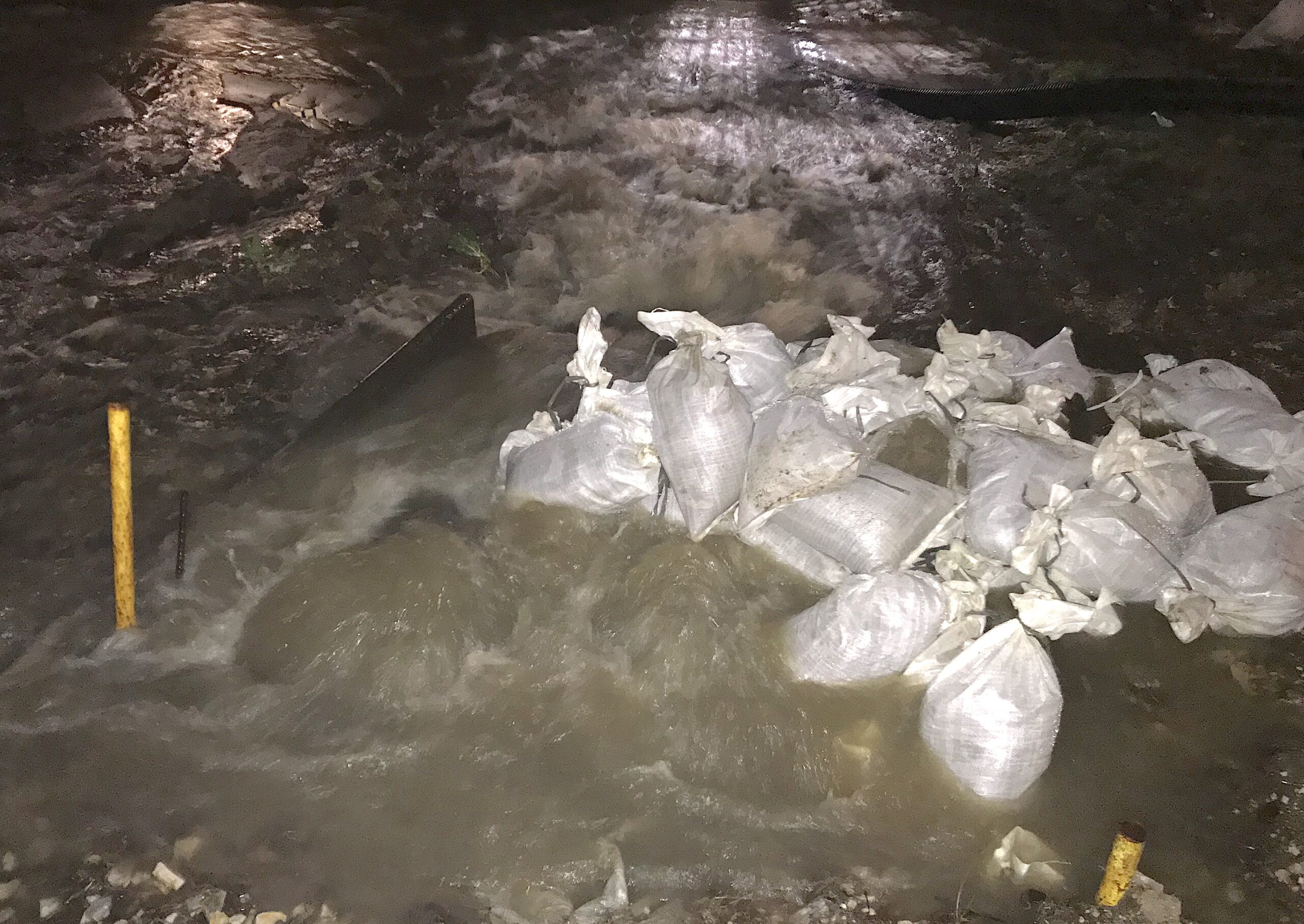
QUINCY — Jeffrey Conte can’t forget May 2, 2019, when he received an early-morning phone call.
“We’ve got a problem,” Conte remembers hearing.
Conte, the director of public works for the City of Quincy, learned a heavy rainstorm that night had led to a break in a storm sewer that runs underneath the water treatment plant on the riverfront. Water was pouring out of the sewer and filling the plant where two pump stations are located.
“We dumped so many sandbags in there, trying to get it stopped,” he said. “But it was a losing battle. We almost lost that pump station here, because the problem was the flood wall (which prevents water from the Mississippi River from coming in) prevented the stormwater from going out. So (the building) is starting to fill up like a bowl.”
City crews eventually pumped the water out of the building, but Conte has other stories like this where the purity of the city’s water supply has been threatened.
The Finance Committee on March 4 unanimously moved a proposal to increase water rates to the full City Council. The average monthly cost to the consumer will be more than $14 should the proposal pass. The rate hike, which is expected to get its first reading at Monday’s council meeting, will help pay for $30 million in proposed improvements to the City of Quincy’s water system, such as floodproofing the water treatment plant and making other repairs that will be done in concert with replacing water and sewer pipes during the state’s upcoming repairs to Broadway.
Finance Committee Chairman Mike Rein said the project “has to be done.” He said the increase will be based on customers’ water usage as opposed to an across-the-board tax increase.
Aldermen voted in December 2022 to add a $9 surcharge to utility bills. Conte said that hike was necessary because the price of chemicals had doubled or tripled, the cost of energy doubled and the cost of sludge disposal went from $95 per ton to $250 per ton because of higher diesel fuel costs and a shortage of truckers.
Aldermen voted in April 2018 to raise water fees 32.2 percent in the next fiscal year and 2.5 percent for each of the next five years to cover water and sewer system repairs. Conte said the city has planned for Fiscal Year 2025 to be the next time to ask for a capital increase.
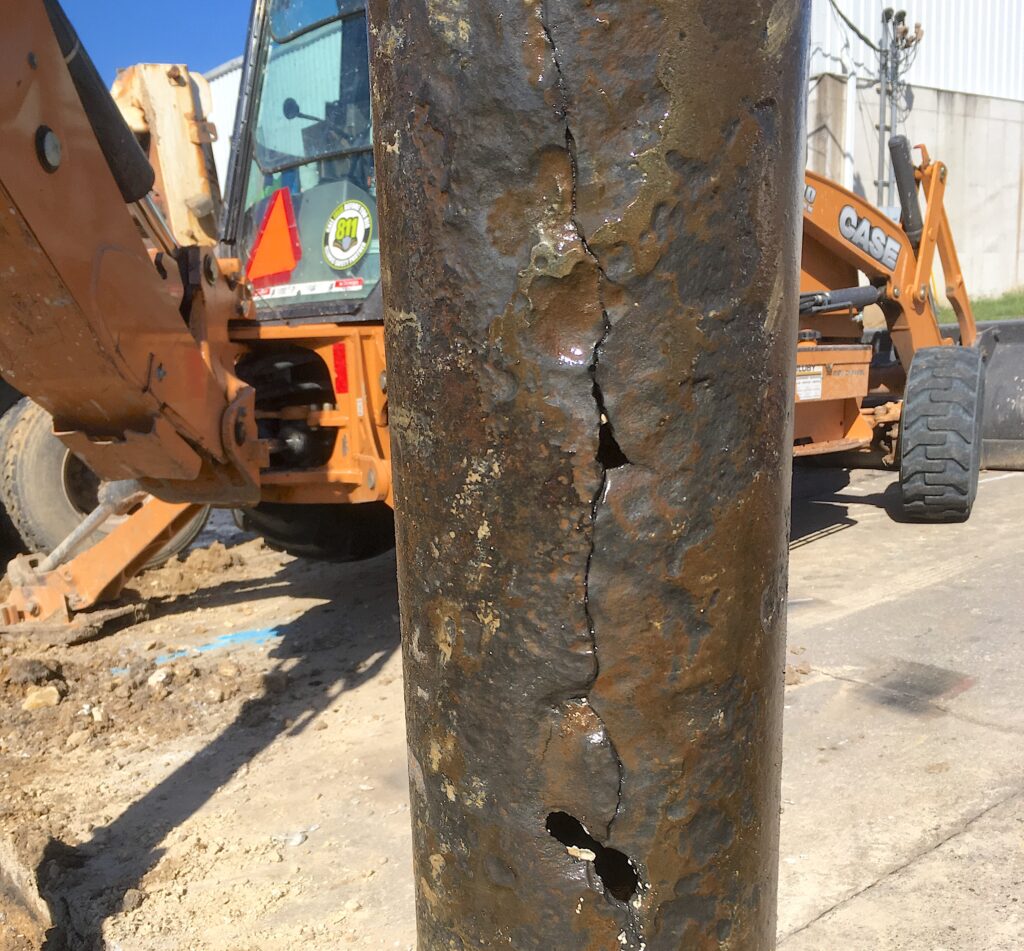
Conte says a 36-inch main, two 24-inch mains, a 20-inch main, an 18-inch main and a six-inch main are in front of the water plant.
“If one of those breaks, this place will be underwater faster than I can get a phone call,” he said. “We had a break up the street here at Front and York about three weeks ago. A six-inch pipe broke, and it was draining 5,000 gallons a minute. You get a 24-inch pipe to break, it will be like 80,000 gallons a minute. (The water treatment plant) will fill up in no time.”
Conte wants to elevate the water treatment plant above the floodwall to save it from any potentially catastrophic damage. He also wants to install submersible pumps that would continue to operate in case of a flood.
He said the city had to use sandbags in 2019 to prevent river water from flooding the plant. City crews had to pump water out of the basement of the plant on Nov. 22, 2017, when a pipe broke.
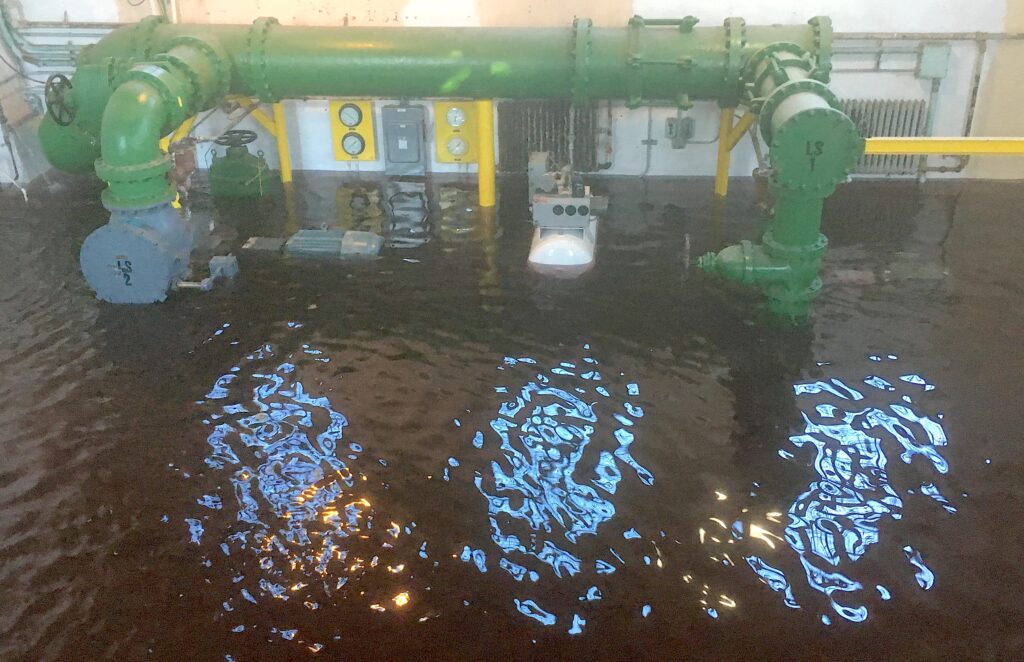
“We got it shut off just in time to prevent us from losing both pumps,” Conte said. “We got to dry the motors, but another 30 minutes and we lose both of those pumps.
“We’ve had a couple of near misses here in the last few years. That’s what keeps me up at night. That’s why I’m trying to prevent that from ever happening. I don’t want to be in charge if the water plant goes offline.”
What happens in a worst-case scenario?
“The reservoir at 22nd and Chestnut has maybe a day and a half worth of water. We have an interconnection with Mill Creek and the Clayton and Camp Point water district,” Conte said. “We might be able to get a tenth of our needs, so we would keep the hospital in service and probably fire protection. That’s about it. The National Guard would have to come in to hand out water to people.”
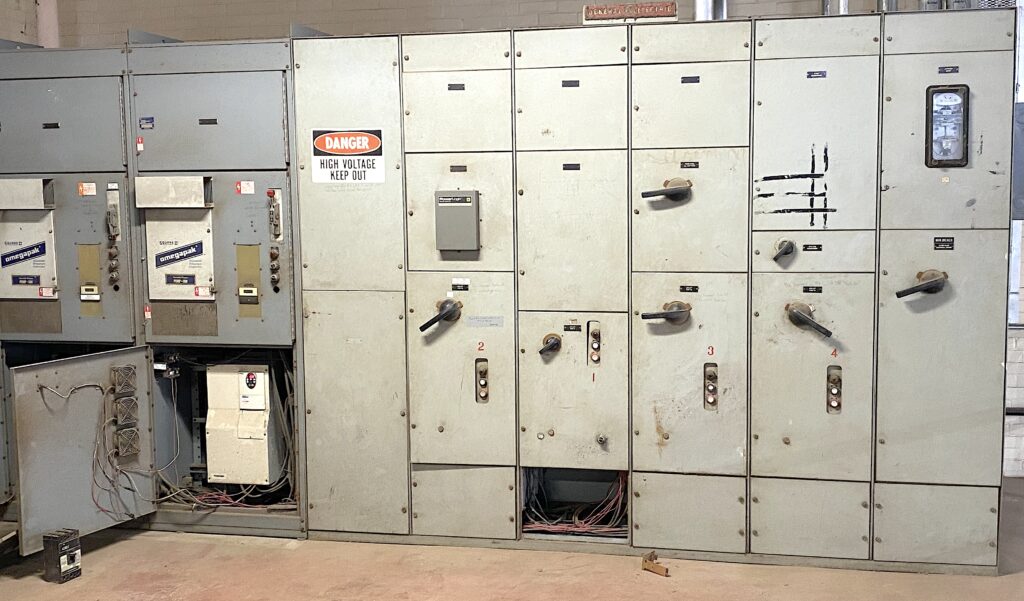
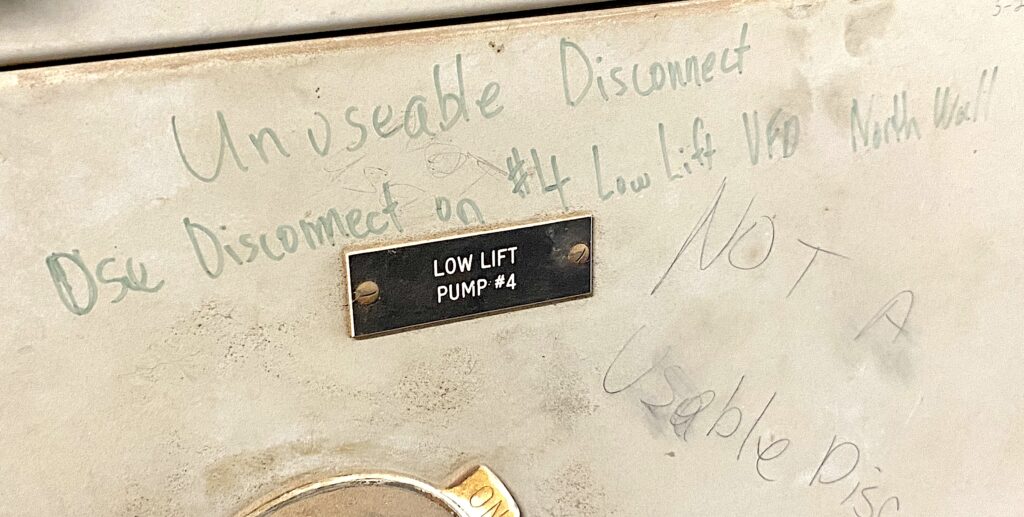
Conte’s proposal also calls for the replacement of the water treatment plant’s electrical system, which was installed in 1957. Fans are strategically used to keep the system from overheating. Several panels have handwriting on them from electricians saying which ones no longer work.
“It’s all obsolete,” he said. “If there is an issue with this and we lose the electrical system, we’re in the same position. We have no water.
“Where I’m standing right now (next to the electrical system) is at elevation 35 on the river, which same as the top of our flood wall. Realistically, the floodwaters could never get higher than 35 feet, because 35 feet is higher than the drainage district levees. Those would be flooded, and that would keep the river from rising. We’ll have all our equipment at this elevation or higher.”
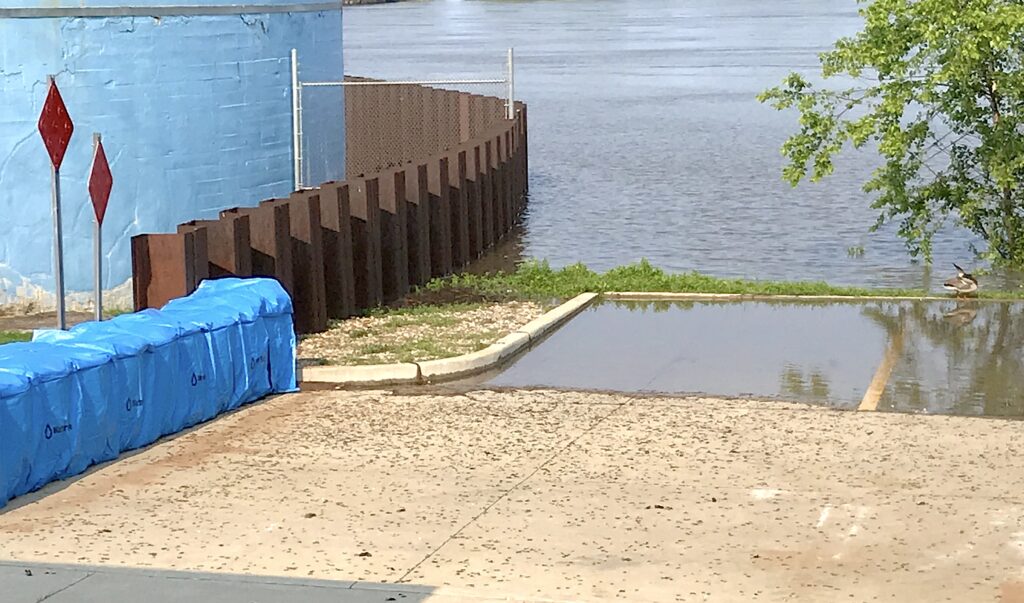
Conte said the city previously put the water treatment plant project out for bid and got one bid at $12 million. It was put out again for bid in February, and only one bid at $15.4 million came in.
“We are going back to the drawing board, and we’re going to break it up into smaller pieces,” Conte said. “That will allow us to use more local contractors. Everything has gone up in price in the last two and a half years. The third time’s going to be the charm. We think that’s going to save us a few million.”
Conte believes work will begin on the project in the spring of 2025 if aldermen pass the water and sewer rate increases. He hopes to have all contracts signed this spring.
The city has an $8.5 million loan from the Illinois EPA to pay for moving the water treatment plant above the flood wall. However, the loan can’t be used for part of the project because it violates EPA rules. The city also will issue bonds for $20 million on the project.
Conte said once the improvements are made at the water treatment plant, “we’re good for 30 or 40 years.” However, he said the city also has $50 million in lead service lines that need to be replaced.
Lead service line replacements are mandated by the Lead Service Line Replacement and Notification Act. Communities with 5,000 to 9,999 lead service lines must replace all those lines within 20 years starting in 2027.
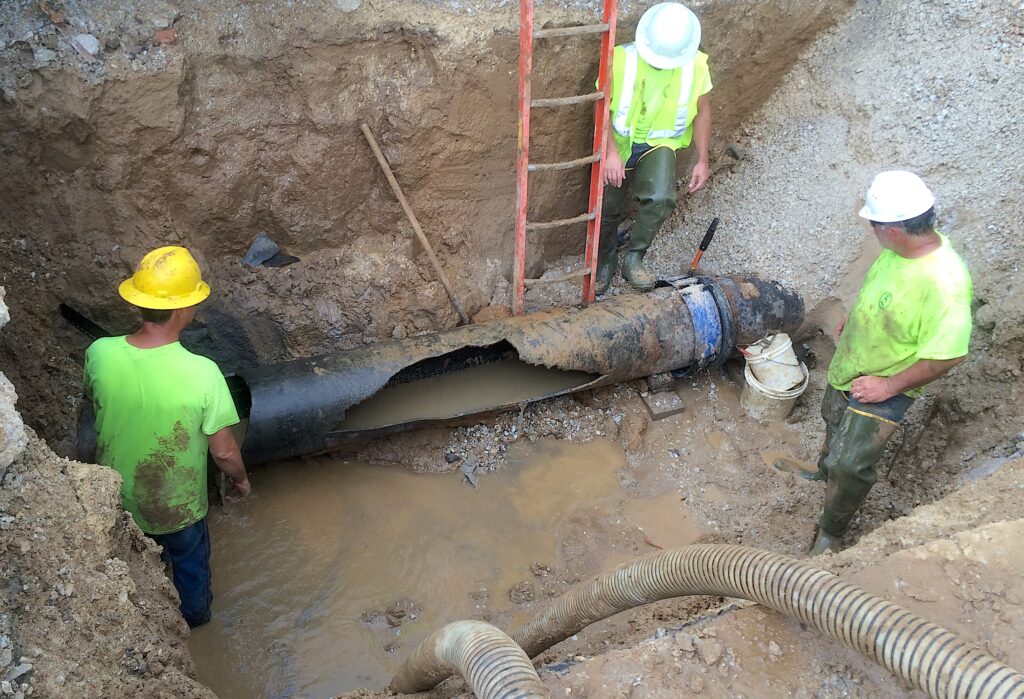
An estimated $5 million replacement of water infrastructure under Broadway is expected when the Illinois Department of Transportation begins its anticipated resurfacing. City policy now calls for replacing lead service lines before doing any street resurfacing work. Conte said one of the mains to be replaced on Broadway was installed in 1890.
Since the city started replacing water mains and lead service lines in 2015, the amount of water lost annually has dropped from nearly 35 percent in 2015 to a projected 26 percent in 2024. Conte said the city’s target is to be around 10 percent in losses.
“People are using more water, but we’re pumping out less,” Conte said. “That’s why we replace mains.”
The city has spent $67.8 million on its water treatment plant, water distribution system, sewage treatment plant, sewage collection system and various machinery and vehicles for those projects since Fiscal Year 2015. Director of Administrative Services Jeff Mays says the expenditures are examples of “promises made and promises kept” by people in political office at the time.
“Now we’ve got this other mountain to climb,” Mays said. “We’re not going have a slush fund pile of money laying around (if the water and sewer rates are increased). If this (water treatment plant project) would have been done 12 years ago when the rates were very, very low rates, you could have probably gotten four times the fix that we can get now.
“We’re not going to be pounding our chests about a whole lot of money. We want to fix this problem. It’s been dealt to us, and we’ve got to deal with it. We’re not blaming anybody else, but this is our charge. We’ve got a guy who loses sleep at night when this system is not what it ought to be.”
Miss Clipping Out Stories to Save for Later?
Click the Purchase Story button below to order a print of this story. We will print it for you on matte photo paper to keep forever.

